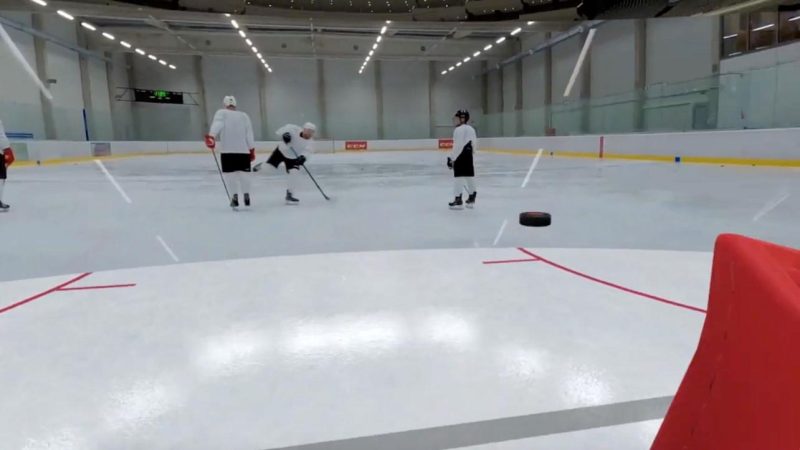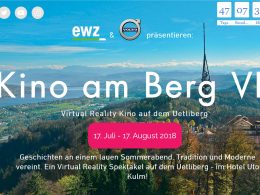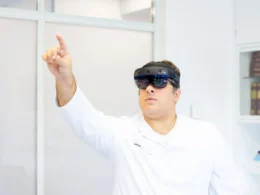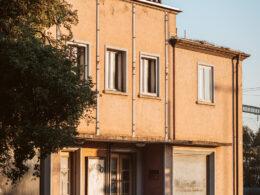The new virtual reality training tool Sense Arena is getting a boost thanks to Corona. This means NHL goalkeepers don't have to lace up their skates or put on their pads, let alone go out on the ice to make saves. Switzerland has already been equipped since last year.
About Sense Arena we already reported on last year. It's about a VR programme that gives goalies the feeling that they can block real shots. The whole thing works via a headset and paddles that are attached to either the catcher's glove or the blocker. Switzerland's first platform for virtual Ice hockey stands in Nürensdorf.
Thanks to Corona, the training platform seems to have gained momentum over the year. More and more players and teams are using it.
Also in use after Corona
Los Angeles Kings goaltending coach Bill Ranford got involved with the virtual reality programme after learning about it at an online goaltending symposium in June. Since then, several goalies from the Kings' organisation have been using it. The coach is convinced that it will catch on everywhere, even if it was initially only intended as an alternative for the time when not every player could take to the ice for training because of the coronavirus pandemic.
Ranford sees this as a perfect tool that helps the goalkeeper to concentrate on tracking the puck and intensify the work with his hands. Because the goalies don't have to put on all their equipment for this, they also save valuable energy. The first feedback from junior goalkeeper Jacob Ingham, who is on loan from the Kings to Eisbären Berlin, confirmed the potential of the programme.
"It actually feels like you're in an NHL arena. I'm surprised how realistic it all is," said Antoine Bibeau of the Carolina Hurricanes. "There's one part of the programme with shooters and another with drills to improve reaction time. It's a great tool for us goalies."
Pinpoint training
"Jacob used it and couldn't believe how well he saw the puck in practice because the glasses force you to move your head to follow the disc closely," Ranford explained.
Sense Arena has been developed in the Czech Republic over the past three and a half years under the leadership of Bob Tetiva. He is also the owner and CEO of the associated company and worked with Marek Schwarz, a first-round draft pick of the St. Louis Blues in 2004 who now guards the Liberec goal in the Czech Extraliga. As a model and test subject, Schwarz refined some details that are important for the goalie position.
"I am firmly convinced that in future the athletic training of keepers will involve more mental work and fewer squats or push-ups. In concrete terms, this means studying the shot delivery in detail and controlling the goal area even better," said Tetiva. For this, Sense Arena offers a variety of training opportunities with its options, such as reaction exercises, tracking passes and shots. In addition, the goalies could work more on taking up a good position in or in front of the goal to offer the opponent as few gaps as possible for a successful finish.
Ranford sees the programme as a good training alternative that keeps goalkeepers more rested during the season. According to him, the current version is ideal for simple movement patterns and shots. However, he sees a problem when goalies have to move from side to side in trainers rather than skates. The processes are fundamentally different. Ranford therefore wants to test other variations, including a sliding board on which the goalkeeper can move. Some professional teams in Europe also use Sense Arena on the ice with fully equipped goalies.
With goalies and teams in the NHL already using the technology, and an improved version set to launch in November, virtual and real reality are sure to become increasingly intermingled in goalie training.
Source: nhl









